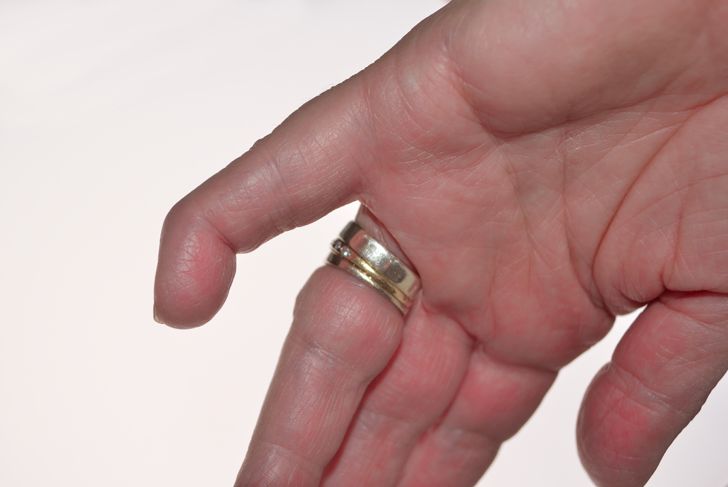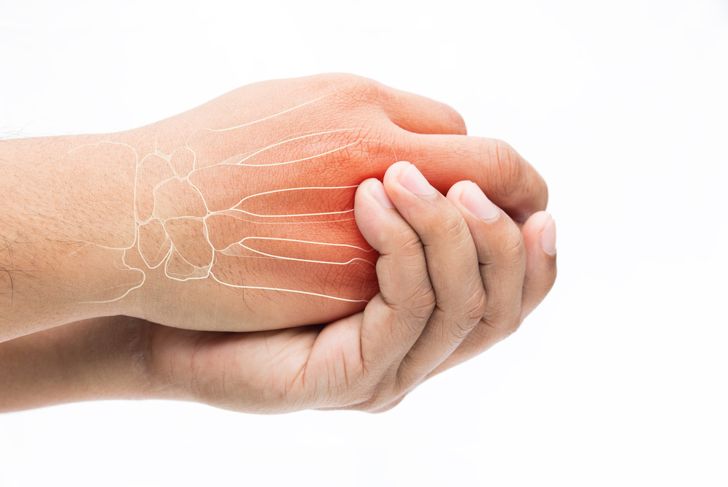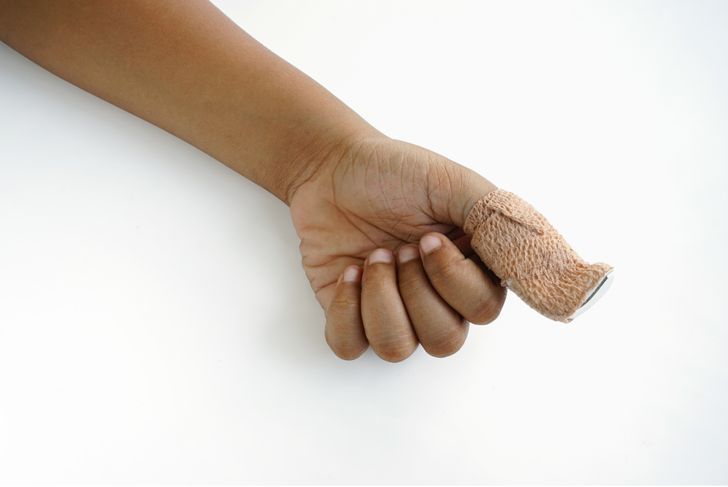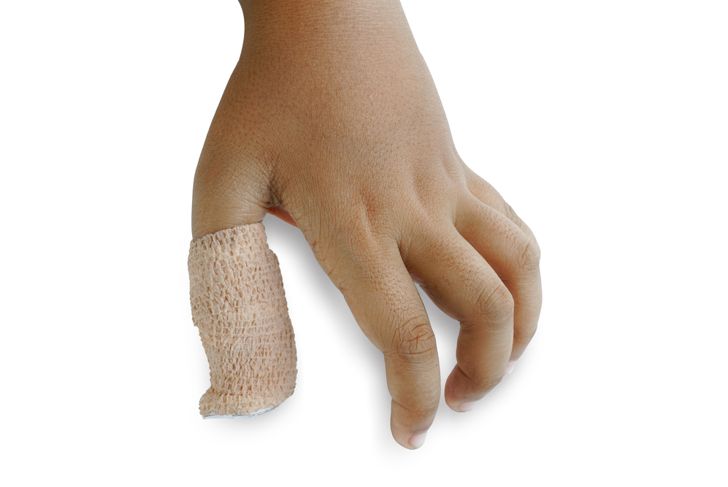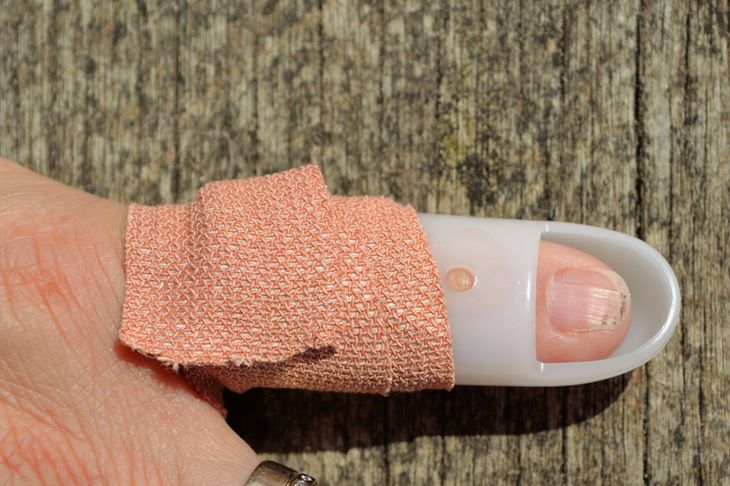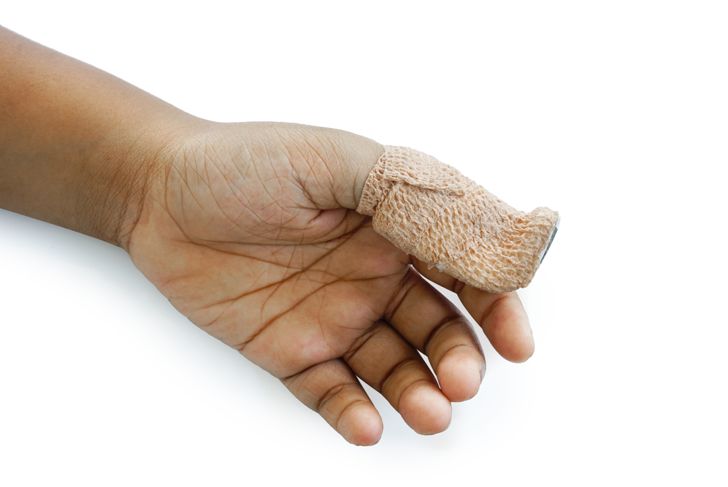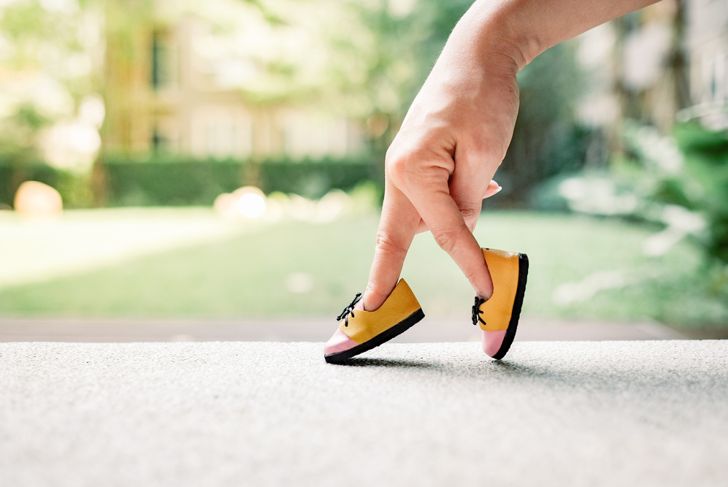Mallet Finger is an injury that typically occurs in sporting activity when a ball hits the fingertip or thumb so strongly that the tendon is severely damaged. In the USA this injury may also be called a "baseball finger" since this is one of the contexts where it most frequently happens. This is one of the easiest complaints to diagnose since a look at the bent-over finger of thumb instantly shows the observer what has happened. However, even though external appearance makes for instant problem identification, the doctor still might ask for an x-ray to see damage to the joint and check joint alignment.
Inability to raise a finger or thumb
Someone who suffers a mallet finger injury loses the ability to raise their injured finger or thumb. The sight of this finger stuck in a bent down position towards the palm is the prime sign that they have sustained this kind of damage. The object that struck the finger, or an accidental bang against a hard substance, stretches or completely tears the tendon that attached the finger to the muscle and therefore it loses its power of movement. Even if it is possible to push up the finger, it lacks the strength to remain in its normal position. The mobility loss need not occur immediately after the blow, but sometimes it occurs a while after this injury.
A painful injury
Anyone who receives a hard bang to their finger or thumb knows that it is definitely going to hurt them. The injured person invariably feels the pain before they notice how the impact has left their finger bent down. If they suffer from a mallet finger injury they normally first experience this pain at the finger's distal joint. The length of time the finger continues to give pain varies in line with the extent of the injury. Swelling might accompany the pain, and it is advisable to have a doctor check to make sure there is no fracture.
Damage to the skin might occur
A mallet finger injury does not break the skin or nails in the majority of incidents, but now and again more extensive harm occurs. Doctors find cases where it appears as if the skin remains intact while it actually is punctured. The bone or joint suffers damage in the more severe cases. An opening of the skin leaves the patient at risk of infection. To check how far the damage extends a doctor often decides to get an x-ray.
Mallet finger injuries in children
These injuries raise special concerns in children out of fear of how this bone damage might affect their future growth. One of the doctor's tasks is to determine if the injury tore the nail bed and seriously damaged the growth plate. An experienced doctor learns a great deal from a visual inspection of the mallet finger. They will almost certainly ask for an x-ray since they must decide if it is sufficient to make non-surgical bone realignment, or possibly the child needs a minor operation.
High expectations of an almost complete recovery
If treated in good time and in the right way, a mallet finger injury rarely leaves any lasting major damage. In the worst scenario, this person could lose the ability to extend their finger or thumb as much as they did before the injury. While getting treatment is no medical emergency leaving the finger untreated could open the way to a tendon imbalance problem. Neglecting care of the injury or poorly administrated treatments may lead to the patient ending up with a swan neck finger or some other lasting abnormality.
The most common treatment — splinting
Splinting is the most appropriate treatment if this finger or thumb injury involves a ruptured tendon without damage to the bone. The doctor might choose a commercial splint or a dorsal aluminum splint. How exactly he or she attaches, the splint varies with the exact nature of the injury. Usually, the splint needs to remain in place for about two months. Afterward, the patient may remove it but reapply it to protect the injured finger as required. After a further two months have passed, they no longer need to use this splint.
Pinning a mallet finger
The severity of the injury makes pinning or some other surgical option the best approach to take in some instances. Normally the doctor takes this decision after analyzing x-ray results. For example, the doctor could be concerned over the finger joint's stability. They might want to pin the joint in position if the bone fragment is of a sufficient size. This procedure prevents motion, and so it helps ensure a smooth healing process. Sometimes small screws replace pins for this stabilization procedure.
Movement of the mallet finger helps to heal
Since some treatments require pinning the mallet finger joint, it might give the impression that movement slows down healing. Doctors actually urge patients to continue to use all their fingers normally as much as possible to ensure that all the other finger joints remain fully mobile. Obviously, sporting and other activities that might lead to further injury are not a good idea. Also, someone employed in a manual job might be limited in the kind of work he or she can do.
Perform finger exercises
Steps to avoid fingers become stiff figure prominently in the mallet finger healing process. Besides continuing to move fingers normally as much as possible, doctors often suggest special exercises to avoid stiffness. The family doctor might provide exercise instructions or refer the patient to a specialist hand physiotherapist. Possibly a single visit to this specialist suffices or a series of appointments. It is hard to generalize since so much depends on the extent of the injury.
Make sure to keep the injured finger clean
Anyone with a splinted mallet finger needs to take additional steps to avoid infection. For example, remember to wash both the finger and splint daily with soap and water and dry them well afterward. Take care when replacing the strapping on the splint that it only covers the center of the splint but not the finger's middle joint.

 Home
Home Health
Health Diet & Nutrition
Diet & Nutrition Living Well
Living Well More
More